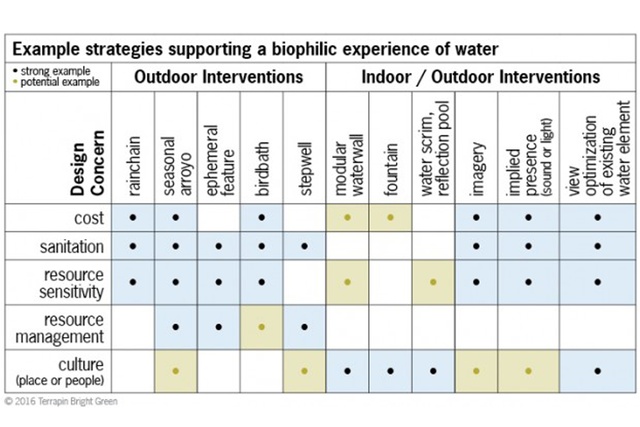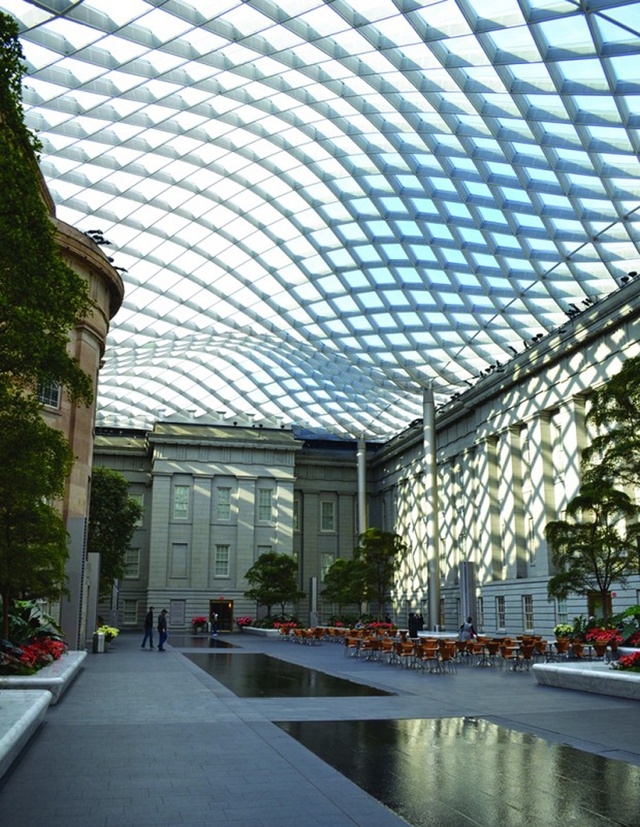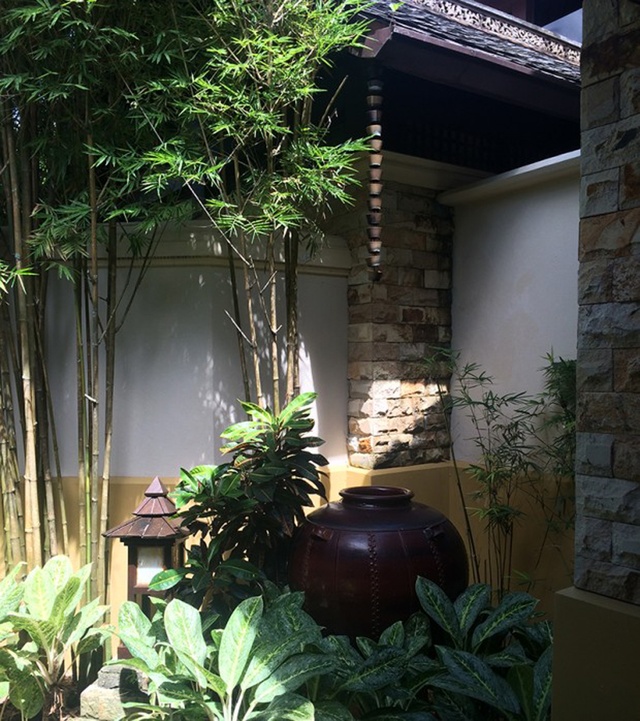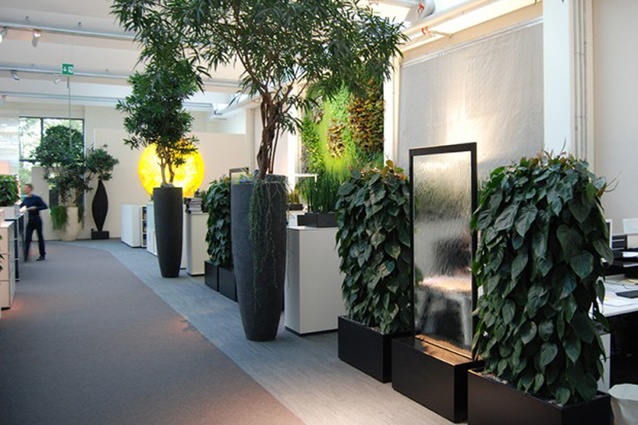Water for wellbeing: solving design challenges through the presence of water
Partner Content: An Interface report on solving design challenges for health through the presence of water, as part of a series which focuses on the 14 patterns of biophilic design.
The presence of water – from crashing waves to trickling streams, wading pools, and water fountains – enhances the experience of a place. The ‘presence of water’ biophilic design pattern has evolved from research on the health and wellbeing benefits associated with access to water, including reduced stress, lower heart rate and blood pressure, increased feelings of tranquility, positive emotional responsiveness, improved concentration and perception, and memory restoration. The general take-away from the research is that a frequent multisensory experience of clean water is very good for our psycho-physiological wellbeing.
More so than many other patterns of biophilic design, designers and owners are often wary of introducing the ‘presence of water’ into their projects. Some of the most common concerns are cost, sanitation, water scarcity, or cultural appropriateness of water features. However, there are many ways to incorporate ‘presence of water’ into a design that overcome these challenges and provide multiple benefits.
Cost and Scale
Cost is among the most common deterrent to incorporating water features. Large or extensive water features can have a high first cost with continuous maintenance requirements built into the design. While thoughtful design should be able to mitigate concerns for energy intensity, risk of leakage, or humidity balance, large awe-inspiring water features are not always the most appropriate solution for optimizing health impact at a project site.
For instance – when not value-engineered out – large water features are often situated in spaces where people don’t spend a lot of time (e.g., lobbies and other low density spaces), and as a result they tend to be a missed opportunity for engendering cognitive restoration and other benefits to our wellbeing.

When larger features are deemed appropriate and financially feasible, they should be placed in locations where the maximum number of people can experience them for a prolonged period of time, perhaps in locations with adequate seating. Smaller water features are often a good alternative, since they require less energy and maintenance, are generally self-contained, and can be designed to be mobile, allowing flexibility in space planning. Strategically situated, small fountains or water walls can serve multiple purposes, such as providing visual and speech privacy, increasing concentration, and supporting relaxation.
Sanitation
Sanitation is a frequent concern with the presence of active water features, particularly for healthcare and food processing facilities. In spaces where such features cannot be introduced, projections and representations of water can provide some semblance of the presence of water and associated health benefits, while both minimizing first costs and maintenance and meeting health and sanitation requirements.
An operational water feature in an adjacent reception area or outdoor courtyard may serve as source or inspiration for indoor representations; for instance, light reflections from a water feature can be projected onto a ceiling or wall, and the sounds of a water feature can be broadcasted deep into a space or building. Sound and light originating from a small or distant water feature can alter the perception of its size and proximity. Awareness and novelty of the experience can be elevated by limiting auditory access to the most impactful locations within a space (i.e., not uniformly distributed) for targeted outcomes, such as to engender concentration or speech privacy in designated zones, or to draw pedestrians through the space toward a destination.

Resource Sensitivity
Resource sensitivities, particularly in water-poor regions, tend to place limitations or restrictions on engineered water features. Securing community acceptance and meeting sustainability goals are justifiably prioritized, though the value proposition of a presence of water is not always fully articulated. Projections and imagery of water are often a viable solution for water-sensitive sites.
However, the presence of an active water feature also presents an opportunity – through responsible design – to educate users on issues of water scarcity and water efficiency, while optimizing positive health impacts and fostering a connection to place.
Small features can celebrate water as a precious resource. For instance, cyclical or closed-loop systems (e.g., modular or portable water fountains) that do not create a significant water burden, as well as naturally occurring or engineered ephemeral water features (e.g., rain chains, seasonal arroyos, rain gardens) can provide a restorative experience and help connect people to natural systems, while highlighting the seasonality or scarcity of water on the site.

Water Management Integration
Flood mitigation, surface drainage and quality control, and groundwater aquifer recharge are common site management concerns with water. Open-air rainwater management is an effective way of integrating the Presence of Water pattern for the benefit of both the landscape and the people who experience it.
Rainwater retention, harvest and reuse strategies provide prime opportunities for enhancing the human experience of a place. Historic management practices, decorative or spiritual applications, or passive cooling strategies can be designed to emphasize the functionality and climatic or cultural responsiveness of a space.
At the site scale, a reflection pool or stepwell may double as a gathering place. An engineered wetland may enhance biodiversity and encourage groundwater recharge, while improving our access to nature for reflection or learning. At the building scale, the combination of an ornamental scupper with rainchain and French drain can serve as a practical drainage mechanism and, when clearly visible to the observer, can double as a seasonal ‘presence of water’ intervention.

Water features can be used to directly bridge the gap between human experience and building or site performance, such as when the feature becomes integral to outdoor rainwater management or indoor humidity control or acoustics. Systems integration for water resource management can also help justify the cost of water features, but necessitates early phase coordination with the MEP design team and facilities management, as well as possibly a landscape architect, environmental engineer, acoustician, or artist, depending on the strategy being pursued.
This is just a quick look at some of the possibilities for integrating a ‘presence of water’. There are many more! Water-based interventions can seem unnecessary or environmentally burdensome; however, in many cases, designers can still find interventions appropriate to their project, site, climate and cultural challenges. See the chart for water strategies that both support wellbeing and meet the needs of challenging or unique projects. Water-based interventions should be used to creatively overcome building design, environmental engineering and resiliency planning challenges while also providing significant health and wellbeing benefits.
For more information on biophilic design in the workplace, see here.
ArchitectureNow works with a range of partners in the A&D supply sector to source appropriate content for the site. This article has been sponsored by Interface.










